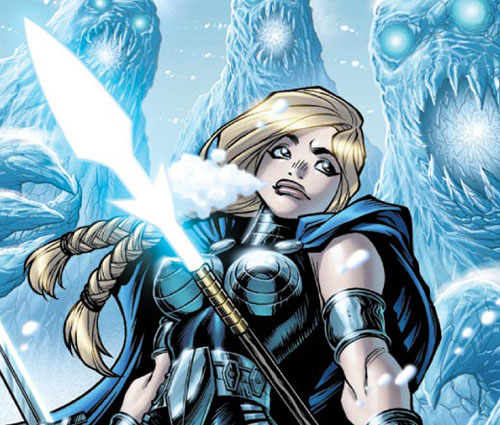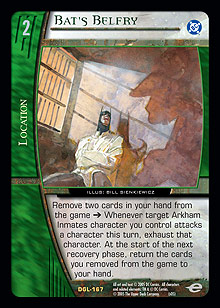Billy
. . . And we’re back! (Well, I am, anyway.) It’s me, it’s me, it’s TBZ.
So, we decided to take a week off so Patrick and Yip could recharge their batteries after a grueling trip through the Australian outback where one week turned into two and almost turned into three before I shipped Yip the following email:
From: The Bill
To: MidgetShoes11@hotmail.com
Subject: RE: R U Still Alive?!?!
I heard about TBS’s passport problems. Did you guys ever manage to get out of the country? Last I heard from TBS, he said he was gonna try to hitch a ride in a shipping container.
In other news, did you get out to see 300? You know it’s a story about how great the Greeks were/are, right? You know I’m Greek, right? So, it’s basically a story about me. Sweet, yes?
Anyway, hit me back when you get this, all-star.
-The Man
p.s. should we finish the design articles?
From: Yip, Andrew
To: SpartanWarlord83632@gmail.com
Subject: RE: R U Still Alive?!?!
Stuck at port.
Food low.
TBS missing.
Patrick near death.
Send Help.
-Andrew
p.s. sure.
Cherry Picking
The Defenders break down into your two basic categories:
- The big four (Dr. Strange, Hulk, Sub-Mariner, and Silver Surfer) and . . .
- The rest.
So, how does that translate into a game like Vs. System, both thematically and mechanically? Let me refer you back to a previously published conversation I had with Yip on this very topic:
Billy: The big four are so cool, they can’t help attracting their fair share of hangers-on and what-have-you.
Andrew: Barnacles.
B: Barnacles. The big four are powerful enough to take on any threat regardless of whether or not the minor leaguers are hanging about.
A: We can’t do a team with just four characters. Will the Defenders team still be cool enough if we have to use lower tier characters like Nighthawk and Devil-Slayer?
B: Hey, Devil-Slayer is somebody’s favorite character, man. Show some respect.
A: Sorry, you’re right. You’re always right, every time, without exception.
After establishing my infallibility, we decided that the big four* would get at least two drops apiece, make up the core of any Defenders deck, and inspire the majority of the team’s non-character cards. The rest of the team would be made up of the more popular minor leaguers, hence cards like The “B” Team (B . . . for backup?) and Secret Defenders, and would be almost entirely stamped with the backup and substitute keywords to reflect their “support” status.
In Defense of Art
We decided very early on to use the art to reflect and drive home the disparity between the A and B teams. Of course, silliness ensued.
If you take a close look at the B team character art and compare it to the A team art, you will notice that in almost every single B piece, the character depicted is either:
Surrounded by enemies . . .

Running away from battle . . .
Or getting humorously overpowered by monsters or demons . . .
(That last one is my favorite.)
Now look at the big four. What do you see? No embarrassing fruit cellar shenanigans, let me tell you (except for 4-drop Surfer; we just couldn’t help ourselves). I know what you’re thinking: “These guys totally hate my favorite characters!” That couldn’t be further from the truth. Everything we attempted here was done with extra love and infinite respect for the fans of the comics and the game. We would never purposely defame any character (Clumsy Foulup) or any team (The Skrulls).
Despite ourselves (credit the artists), the Defenders ended up looking rather snazzy, with some pretty juicy action to boot. To describe said action, I now kick you over to the illustrious Mr. Andrew Yip.
Andrew
As Billy mentioned, much of the Marvel Team-Up R&D team was away in Australia this past week, gallivanting across the country and staying away from the drop bears. For those who aren’t familiar with the animals (as I wasn’t), drop bears are creatures of mythical proportions. Their True Name is rarely spoken, and then only as slight whispers across grassy fields on a windy day. These creatures spend days manufacturing venomous bile in their many-toothed maws—poison prepared specifically to be injected into and incapacitate an unprepared human victim. Living up to their name, drop bears unleash their devastating silent attack by lying motionless in trees, precipices, and other objects of moderate height for days on end. Once a potential meal walks underneath, the drop bear need do little more; he simply releases his perch and lets gravity bring him to his prey. It’s really hard to describe unless you witness it firsthand (which is rare, since no one escapes), but let me tell you, it was both the most terrifying and rewarding experience I had in Australia. If you don’t believe me, all you have to do is check Wikipedia. It’s documented. A close second rewarding experience was certainly meeting and drafting with the many Australian locals that play Vs. System. G’day, er, mates.
If you were to ask anyone in the office, it’d quickly become obvious that much of my design is based off historical precedent—identifying what’s worked, tweaking it with some new flavor and context, and being confident of the response. So it shouldn’t come as a surprise that I’m also a big fan of mechanical continuity; Heralds and Legion shared cosmic, among other things, and players familiar with Heralds will see hues of its influence in Marvel Team-Up and Marvel Legends.
But designers don’t stick exclusively to mechanics in a given brand, either. After all, Vs. System is cool because of the mix of comic brands. The Marvel Defenders are a perfect example of when mechanics mix; the team uses two big mechanics, both of which made cameo appearances in DC sets: backup in Infinite Crisis, and substitute in Legion of Super Heroes.
As Pat will undoubtedly mention, the Defenders weren’t always about backup and substitute. But as R&D got deeper into design and understood more about the philosophy of the team and the comic (see discussions I had with Billy Zonos above), it became clear that the team lent itself very well thematically to a re-feature and continuation of both backup and substitute. As Billy fondly put it, there are the main four and then there are the rest, with a bunch of humor in between. This thread of humor and the division between the core four and the rotating roster created a logical separation in the team very similar to how one might view the Avengers or Fantastic Four. Unlike the Avengers, it was extremely important for the core four to interact and appear with the cameo appearances. At the very least, the converse was true. And that’s where the original design concept for the Legion of Super Heroes made its return.
During Legion of Super Heroes design, one of Ben Seck’s original visions for the Teen Titans re-feature utilized a concept he called “champion.” In the abstract, champion was themed very much like leader, except each other character in the team channeled its efforts through its champion, whereas leaders lent their power to everyone else. Multiple champions could be utilized on different turns (using substitute) to get a very versatile, deep-roster team feel. Ultimately, the idea was scrapped because Teen Titans had a very established history as a “team” team, and R&D thought that champion was too large of a departure from this root. For the very same reason, champion was a good flavor fit for Defenders and provided an avenue for substitute to be used again in Marvel Team-Up.
Backup followed not too far behind substitute. Since one of the main ways to represent the “character channeling” play pattern of champions was activated powers (particularly attack-step stamped ones), development quickly found that it could be a big headache for the opposing player to wade through all the combat math of a board full of characters with relevant combat powers. Fortunately, backup was created for this very reason, and yet again offered an opportunity to revisit a keyword that hadn’t gotten its full time in the sun.
Patrick
 The Defenders weren’t always about backing up and readying characters. Back when MTU was just a twinkle in Yip’s eye, he and I had planned to make the Defenders a Bat’s Belfry team. You might need to click on that link.
The Defenders weren’t always about backing up and readying characters. Back when MTU was just a twinkle in Yip’s eye, he and I had planned to make the Defenders a Bat’s Belfry team. You might need to click on that link.
Why Belfry? The idea behind it was representing magic, which is how Dr. Strange gets down. The idea was that you had this resource that would deplete and then recharge every turn, sort of how a spellcaster fires off some spells and has to wait to replenish whatever spellcasters use to do this sort of thing. While this is a great representation for Strange, it falls a little short for the rest of the team, who are less magically inclined. It’s also kind of a tracking nightmare, because you’d have this pile of face-down cards lingering off to the side somewhere that you’d have to remember to pick up every turn and keep separate from your other removed–from-game pile(s) (imagine a removed–from-game zone with substituted characters and your face-down “hand”). Furthermore, knowing how you people are, we knew that you would just end up playing whichever one of these cards was the best and ignore the others, therefore negating its cost and removing all the interesting play decisions involved with the mechanic. So really, you have no one to blame but yourselves for the Bat’s Belfry team never coming out.
Eventually, backup was selected because it’s a cool mechanic and it does a good job of representing a team with a few important guys and a lot of interchangeable members. Combine this with Yip’s love for readying characters, and you get the Defenders you know and love today. I think that the Defenders have a lot of exciting action going on and I’m thrilled with the end result, even if Andrew’s affinity for readying characters and reducing resource point costs nearly gave me an ulcer.
Join us next week (we promise!) for a look at Underworld design.
*Andrew: Billy’s prolific use of the phrase “the big four” in conversation quickly wore thin on me, as he used no less emphasis in person.
Selected Card Bibliography
- Silver Surfer, Earthbound: Defenders: Indefensible TPB
- The Order: The Order #1-6
- Secret Defenders: Secret Defenders #1
- Soul Survival: Silver Surfer #100